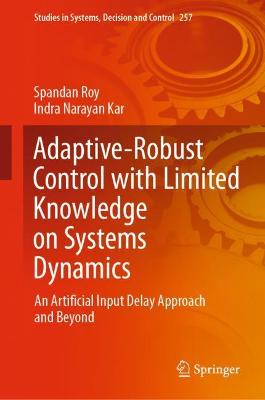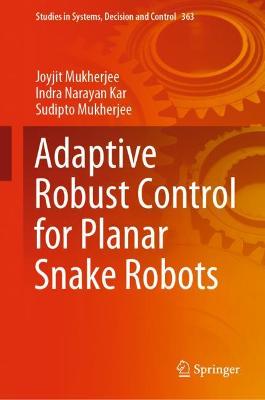Studies in Systems, Decision and Control
2 primary works
Book 257
Adaptive-Robust Control with Limited Knowledge on Systems Dynamics
by Spandan Roy and Indra Narayan Kar
The book investigates the role of artificial input delay in approximating unknown system dynamics, referred to as time-delayed control (TDC), and provides novel solutions to current design issues in TDC. Its central focus is on designing adaptive-switching gain-based robust control (ARC) for a class of Euler-Lagrange (EL) systems with minimal or no knowledge of the system dynamics parameters. The newly proposed TDC-based ARC tackles the commonly observed over- and under-estimation issues in switching gain. The consideration of EL systems lends a practical perspective on the proposed methods, and each chapter is supplemented by relevant experimental data.
The book offers a unique resource for researchers in the areas of ARC and TDC alike, and covers the state of the art, new algorithms, and future directions.Book 363
Adaptive Robust Control for Planar Snake Robots
by Joyjit Mukherjee, Indra Narayan Kar, and Sudipto Mukherjee
This book shows how a conventional multi-layered approach can be used to control a snake robot on a desired path while moving on a flat surface. To achieve robustness to unknown variations in surface conditions, it explores various adaptive robust control methods.
The authors propose a sliding-mode control approach designed to achieve robust maneuvering for bounded uncertainty with a known upper bound. The control is modified by addition of an adaptation law to alleviate the overestimation problem of the switching gain as well as to circumvent the requirement for knowledge regarding the bounds of uncertainty. The book works toward non-conservativeness, achieving efficient tracking in the presence of slowly varying uncertainties with a specially designed framework for time-delayed control. It shows readers how to extract superior performance from their snake robots with an approach that allows robustness toward bounded time-delayed estimation errors. The book also demonstrates how the multi-layered control framework can be simplified by employing differential flatness for such a system. Finally, the mathematical model of a snake robot moving inside a uniform channel using only side-wall contact is discussed. The model has further been employed to demonstrate adaptive robust control design for such a motion.
Using numerous illustrations and tables, Adaptive Robust Control for Planar Snake Robots will interest researchers, practicing engineers and postgraduate students working in the field of robotics and control systems.

